
The Majestic Fagaras Mountains of Romania
Discover the breathtaking beauty and thrilling adventures of Romania's Fagaras Mountains, where nature, wildlife, and scenic trails converge.
The Fagaras Mountains, often referred to as the Transylvanian Alps, are a stunning natural wonder in Romania. They are a part of the Southern Carpathians and boast the highest peaks in the country, with Moldoveanu Peak reaching an impressive 2,544 meters. The range is renowned for its breathtaking landscapes, including vast forests, alpine meadows, and crystal-clear glacial lakes. For hikers and nature lovers, the Fagaras Mountains offer an extensive network of trails that cater to all levels of experience. One of the most popular routes is the Transfagarasan Highway, which is often called the world's best road trip. This scenic drive winds its way through the mountains, offering spectacular views and access to numerous hiking paths. Wildlife enthusiasts will also find the Fagaras Mountains to be a paradise. The area is home to a diverse range of flora and fauna, including bears, wolves, and chamois. Bird watchers can spot rare species such as the golden eagle and the capercaillie. The unique biodiversity makes every visit to the Fagaras Mountains a truly unforgettable experience.
Local tips in Fagaras Mountains
- Visit during the summer months for the best hiking conditions and to fully enjoy the Transfagarasan Highway.
- Bring proper hiking gear, as weather conditions can change rapidly in the mountains.
- Stay in one of the local mountain huts (cabins) for an authentic experience and easy access to trails.
- Carry cash, as some remote areas may not have card payment options.
- Hire a local guide if you plan to explore off-the-beaten-path trails for added safety and insights.
The Majestic Fagaras Mountains of Romania
The Fagaras Mountains, often referred to as the Transylvanian Alps, are a stunning natural wonder in Romania. They are a part of the Southern Carpathians and boast the highest peaks in the country, with Moldoveanu Peak reaching an impressive 2,544 meters. The range is renowned for its breathtaking landscapes, including vast forests, alpine meadows, and crystal-clear glacial lakes. For hikers and nature lovers, the Fagaras Mountains offer an extensive network of trails that cater to all levels of experience. One of the most popular routes is the Transfagarasan Highway, which is often called the world's best road trip. This scenic drive winds its way through the mountains, offering spectacular views and access to numerous hiking paths. Wildlife enthusiasts will also find the Fagaras Mountains to be a paradise. The area is home to a diverse range of flora and fauna, including bears, wolves, and chamois. Bird watchers can spot rare species such as the golden eagle and the capercaillie. The unique biodiversity makes every visit to the Fagaras Mountains a truly unforgettable experience.
When is the best time to go to Fagaras Mountains?
Iconic landmarks you can’t miss
Cetatea Făgărașului
Experience the rich history and stunning architecture of Cetatea Făgărașului, Romania's iconic medieval fortress overlooking breathtaking landscapes.
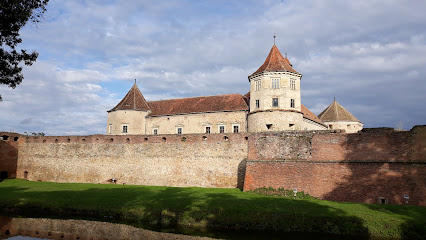
Făgăraș Mountains
Explore the breathtaking Făgăraș Mountains, a stunning destination for hikers, nature lovers, and adventurers in the heart of Romania.

Unmissable attractions to see
Sâmbăta de Sus Monastery
Experience the tranquility and rich heritage of Sâmbăta de Sus Monastery, a serene retreat in the heart of the Carpathian Mountains.

Izvorul Părintelui Arsenie Boca
Discover the tranquil beauty and spiritual heritage of Izvorul Părintele Arsenie Boca, a serene retreat nestled in Romania's lush landscapes.

Aventura Drăguș
Discover the ultimate adventure at Aventura Drăguș, Romania's premier amusement park, where excitement meets nature in a thrilling outdoor experience.

La Vâltori
Experience the serene beauty and cultural charm of La Vâltori, a hidden gem in Romania’s stunning countryside.

Șaua Caprei
Discover the breathtaking beauty of Șaua Caprei in the Făgăraș Mountains, a must-visit destination for nature lovers and outdoor enthusiasts.

Făgăraș Mountains
Experience the breathtaking beauty of the Făgăraș Mountains, Romania's natural treasure, ideal for hiking, wildlife watching, and serene escapes.

Belvedere Viaduct Cascada Călugărița
Explore the breathtaking views from Belvedere Viaduct, a stunning highlight of Romania's Transfagarasan highway offering unforgettable landscapes.
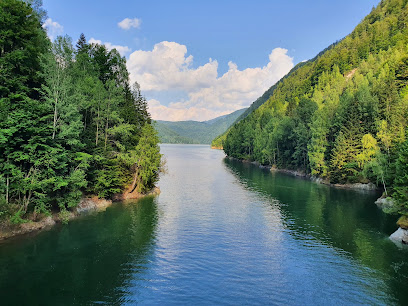
Mounds from Șona
Experience the ancient wonders of the Mounds from Șona, a captivating archaeological site in Romania that unveils the secrets of prehistoric civilizations.

The Alpini Monument
Explore the breathtaking vistas and rich history at The Alpini Monument, a premier hiking destination in Arefu, Romania.

Saturday's Great Window
Discover breathtaking trails and stunning landscapes at Saturday's Great Window, Romania's ultimate hiking destination for outdoor enthusiasts.
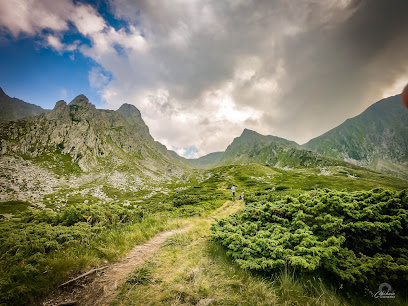
Refugiul Viștea Mare
Explore the breathtaking landscapes of Refugiul Viștea Mare, a hiker's haven in the stunning Făgăraș Mountains of Romania.

Lacul Capra
Discover the serene beauty of Lacul Capra, a breathtaking glacial lake nestled in Romania's Făgăraș Mountains, perfect for nature lovers and adventure seekers.

RwchLake view point
Discover the serene beauty of Rwch Lake View Point in Buda, a picturesque location perfect for nature lovers and photography enthusiasts.

Meteorological Station Balea Lac
Experience the stunning landscapes and meteorological wonders at Balea Lac, a must-visit destination in the Romanian Făgăraș Mountains.

Monumentul Nerlinger
Explore the serene hiking trails of Monumentul Nerlinger in Arefu, where breathtaking views and lush landscapes await outdoor enthusiasts.
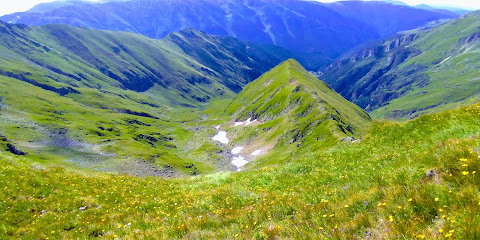
Markets, malls and hidden boutiques
San Grecu
Discover the sweetest spot in Făgăraș at San Grecu, where every cupcake is a delightful work of art, perfect for satisfying your cravings.
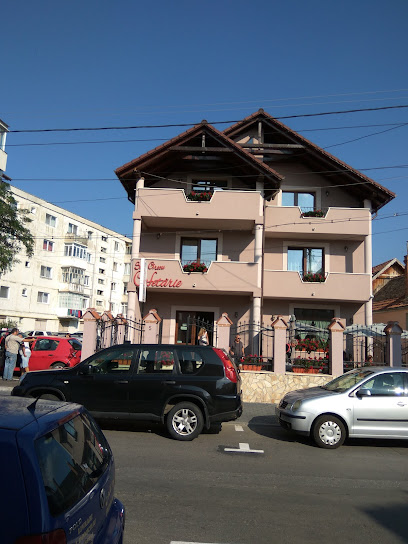
Carrefour Market
Explore Carrefour Market in Făgăraș for a diverse selection of local and international products, perfect for tourists and locals alike.

Cofetăria Happy Pie Făgăraș
Indulge in the finest cakes and pastries at Cofetăria Happy Pie Făgăraș, a delightful dessert shop in the heart of the city.

Sportisimo
Explore Sportisimo in Făgăraș for top-quality sporting goods, apparel, and expert advice for all your athletic adventures.

La Dolceria Boutique
Discover the sweetest side of Făgăraș at La Dolceria Boutique, where delectable desserts and aromatic coffee await every visitor.

Altex
Visit Altex in Făgăraș for all your electronics needs, from appliances to the latest gadgets, all in one convenient location.

Greek Sweets
Experience the authentic taste of Greece with traditional sweets at Greek Sweets in Făgăraș, the perfect stop for dessert lovers exploring Romania.

Librăria Birotex
Explore Librăria Birotex in Făgăraș for a unique blend of literature, stationery, and delightful local gifts in a charming atmosphere.

Flanco Smart Discounter Fagaras
Explore Flanco Smart Discounter in Făgăraș for top-quality electronics, home appliances, and exceptional customer service.

Do&Mi Cake Shop
Discover the sweet symphony of flavors at Do&Mi Cake Shop in Făgăraș, where every dessert tells a delicious story.

Computer' Shop Făgăraș
Explore Făgăraș's tech scene at Computer' Shop, your go-to destination for computers, repairs, and expert services.

Riovirg S.R.L.
Discover the charm of Făgăraș at Riovirg S.R.L., your one-stop convenience store for all essentials while exploring this beautiful town.

Floraria MyFlora
Discover the beauty of nature at MyFlora, Făgăraș's premier florist offering exquisite flowers, arrangements, and delivery services.
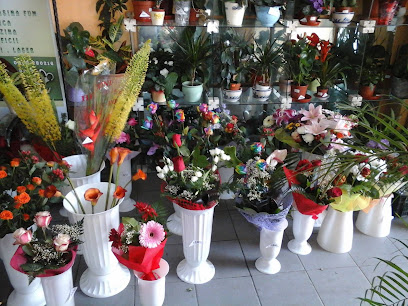
The Garden
Experience the perfect blend of relaxation and flavor at The Garden, Făgăraș's top coffee shop and cultural hub.

YATO FAGARAS
Explore Yato Făgăraș, the ultimate destination for high-quality tools in Făgăraș, Romania, tailored for every project and DIY enthusiast.

Essential bars & hidden hideouts
Deane's Irish Pub&Grill
Discover the lively atmosphere of Deane's Irish Pub & Grill in Brașov, where authentic Irish cuisine meets a vibrant bar experience.

Oldintim
Discover Oldintim in Făgăraș, where culinary excellence meets inviting ambiance for an unforgettable dining experience.

BRICKS brasserie & cafe
Savor the essence of Făgăraș at BRICKS brasserie & cafe, where gourmet cuisine meets a cozy atmosphere for an unforgettable dining experience.

Casa Terra
Discover the flavors of Romania at Casa Terra, a top-notch restaurant in Făgăraș, where tradition meets modern culinary excellence.

Complexul Turistic Fântânița Crăiesei
Discover the flavors of Romania at Complexul Turistic Fântânița Crăiesei, where culinary delights meet nature's tranquility in Făgăraș.

DERBY PUB
Experience the vibrant atmosphere and authentic Romanian cuisine at Derby Pub in Făgăraș, a must-visit for every traveler.
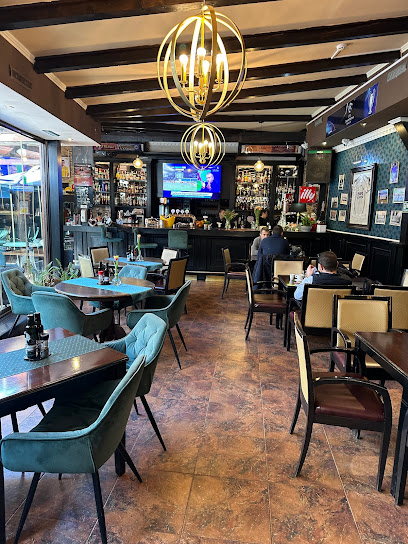
Colors Pub
Discover the flavors of Făgăraș at Colors Pub, a vibrant restaurant offering grilled delights, cocktails, and a cozy atmosphere for all.

Saga Victoria
Discover the vibrant atmosphere of Saga Victoria, where dining, gaming, and nightlife come together in the heart of Romania.

Transilvania
Experience the authentic flavors of Romania in the heart of Transilvania with a delightful dining experience that celebrates local cuisine.

13 Pub Brasov
Discover the lively 13 Pub Brașov, where delicious pizzas, exquisite cocktails, and live music create unforgettable evenings in a charming atmosphere.

Folio Bistro By Paul Novac
Experience the finest in Romanian cuisine at Folio Bistro, where tradition meets innovation in a charming setting.

Bistro Story Caffe
Discover the flavors of Romania at Bistro Story Caffe, where every meal tells a delicious story in the heart of Făgăraș.

Casandra Restaurant
Experience the essence of Romanian cuisine at Casandra Restaurant in Făgăraș, where every meal is a journey of flavors and hospitality.

Burg Cafe & Pub
Discover the cozy charm of Burg Cafe & Pub in Făgăraș, a perfect blend of hearty meals and delightful coffee experiences.

Narin Restaurant
Discover the authentic flavors of Romania at Narin Restaurant, a culinary haven in Făgăraș offering exquisite local dishes and a warm atmosphere.

Local Phrases about Fagaras Mountains
-
- HelloSalut
[sah-loot] - GoodbyeLa revedere
[lah re-ve-de-re] - YesDa
[dah] - NoNu
[noo] - Please/You're welcomeTe rog
[teh rohg] - Thank youMulțumesc
[mool-tsoo-mesk] - Excuse me/SorryScuzați-mă
[skoo-za-tsi muh] - How are you?Ce mai faci?
[cheh my fahch?] - Fine. And you?Bine. Și tu?
[bee-neh. shee too?] - Do you speak English?Vorbiți engleză?
[vor-bits eng-leh-zuh?] - I don't understandNu înțeleg
[noo uhn-tseh-leg]
- HelloSalut
-
- I'd like to see the menu, pleaseAș dori să văd meniul, vă rog
[ush doh-ree suh vud meh-nyool, vuh rohg] - I don't eat meatNu mănânc carne
[noo muh-nunk kahr-neh] - Cheers!Noroc!
[noh-rok] - I would like to pay, pleaseAș dori să plătesc, vă rog
[ush doh-ree suh pluh-tesk, vuh rohg]
- I'd like to see the menu, pleaseAș dori să văd meniul, vă rog
-
- Help!Ajutor!
[ah-yoo-tor] - Go away!Du-te!
[doo-teh] - Call the Police!Sunați Poliția!
[soo-nats po-lee-tsya] - Call a doctor!Sunați un doctor!
[soo-nats oon dohk-tor] - I'm lostM-am pierdut
[mahm pyehr-doout] - I'm illSunt bolnav
[soont bohl-nav]
- Help!Ajutor!
-
- I'd like to buy...Aș dori să cumpăr...
[ush doh-ree suh koom-puhr] - I'm just lookingDoar mă uit
[doh-ahr muh ooit] - How much is it?Cât costă?
[kaht koh-stuh?] - That's too expensiveEste prea scump
[ehs-teh pryah skoomp] - Can you lower the price?Puteți să scădeți prețul?
[poo-tehts suh ska-deh-tsi preh-tsool?]
- I'd like to buy...Aș dori să cumpăr...
-
- What time is it?Cât este ceasul?
[kaht ye-steh chah-sool?] - It's one o'clockEste ora unu
[ehs-teh oh-rah oo-noo] - Half past (10)Jumătate (zece)
[zhoo-muh-tah-teh (zeh-che)] - MorningDimineața
[dee-mee-neh-tsah] - AfternoonDupă-amiază
[doo-puh ah-mya-zuh] - EveningSeara
[seh-ah-rah] - YesterdayIeri
[yehr] - TodayAstăzi
[ahs-tuhz] - TomorrowMâine
[muh-ee-neh] - 1Unu
[oo-noo] - 2Doi
[doy] - 3Trei
[tray] - 4Patru
[paht-roo] - 5Cinci
[cheen-chee] - 6Șase
[shah-seh] - 7Șapte
[shahp-teh] - 8Opt
[opt] - 9Nouă
[noo-uh] - 10Zece
[zeh-che]
- What time is it?Cât este ceasul?
-
- Where's a/the...?Unde este unul/o...
[oon-deh ye-steh oo-noo/oh] - What's the address?Care este adresa?
[ka-reh ye-steh ah-dre-sah] - Can you show me (on the map)?Puteți să mă arătați (pe hartă)?
[poo-tehts suh muh a-ruh-tatsi (peh har-tuh)?] - When's the next (bus)?Când este următorul (autobuz)?
[kund ye-steh oor-muh-toh-rool (ow-toh-booze)] - A ticket (to ....)Un bilet (spre ....)
[oon bee-let (spreh)]
- Where's a/the...?Unde este unul/o...
History of Fagaras Mountains
-
The Fagaras Mountains have been inhabited since ancient times. Evidence of Thracian settlements has been discovered in the region, pointing to an advanced society that thrived here long before the Roman conquest. These early inhabitants left behind burial mounds and artifacts that provide insight into their way of life.
-
During the 1st century AD, the Roman Empire expanded into the region, establishing fortifications and roads that traversed the Fagaras Mountains. The Via Transilvanica, a Roman road, facilitated trade and military movements, leaving behind ruins that can still be explored today.
-
The Middle Ages saw the construction of numerous castles and fortresses in the Fagaras Mountains as local rulers sought to defend their territories from invaders. Notable among these is the Făgăraș Citadel, a formidable fortress that played a crucial role in the defense of Transylvania against Ottoman incursions.
-
The Fagaras Mountains are steeped in folklore, including tales of Vlad the Impaler, the historical figure who inspired the legend of Dracula. His stronghold, Poenari Castle, is perched high in the mountains and is a popular destination for those intrigued by the Dracula mythos.
-
During World War II, the Fagaras Mountains served as a hideout for anti-fascist resistance fighters. The rugged terrain provided a natural fortress for those opposed to the Axis powers, and numerous skirmishes took place in the dense forests and high passes.
-
Constructed between 1970 and 1974, the Transfagarasan Highway is one of Romania's most famous roads, winding through the Fagaras Mountains. Built during Nicolae Ceaușescu's regime as a strategic military route, it is now celebrated for its breathtaking views and engineering marvels.
-
The Fagaras Mountains are home to a rich tapestry of cultural heritage, including traditional Romanian villages where customs and crafts have been preserved for centuries. Visitors can experience local festivals, traditional music, and artisan crafts that reflect the enduring spirit of the region.
Fagaras Mountains Essentials
-
The Fagaras Mountains are situated in central Romania and are part of the Southern Carpathians. The nearest major city is Sibiu, which has an international airport (Sibiu International Airport) that services flights from various European destinations. From Sibiu, you can take a train or bus to the town of Fagaras, which is a good starting point for exploring the mountains. Alternatively, you can fly into Bucharest's Henri Coandă International Airport and then take a train or bus to Fagaras. The journey from Bucharest to Fagaras typically takes around 4-5 hours by train or bus.
-
Public transportation options within the Fagaras Mountains are limited. It is advisable to rent a car for flexibility and convenience, especially if you plan to explore various parts of the mountain range. Local taxis are available in towns like Fagaras, but they may not be the most reliable for remote areas. For hiking and trekking, prepare for long walks as some trails can only be accessed on foot. Additionally, some areas offer guided tours that include transportation.
-
The official currency in Romania is the Romanian Leu (RON). Credit cards are widely accepted in larger cities and towns, but it's wise to carry cash when venturing into rural or remote areas. ATMs are available in towns like Fagaras and Sibiu, so it is advisable to withdraw sufficient cash before heading into the mountains. Be prepared for some smaller establishments to accept cash only.
-
The Fagaras Mountains are generally safe for tourists, but it is important to be prepared for the natural challenges of mountain terrain. Ensure you have proper hiking gear, sufficient water, and supplies. Avoid hiking alone and inform someone of your plans before setting out. Crime rates targeting tourists are low in the mountains, but it is always wise to stay vigilant and keep an eye on your belongings, especially in crowded areas like train stations and tourist hotspots.
-
In case of an emergency, dial 112 for immediate assistance. There are mountain rescue services (Salvamont) equipped to handle emergencies in the Fagaras Mountains. For medical emergencies, the nearest hospitals are in towns like Fagaras and Sibiu. It is highly recommended to have travel insurance that covers medical emergencies and mountain rescue operations. Carry a basic first aid kit and know the location of the nearest shelters and mountain huts.
-
Fashion: Do wear appropriate hiking gear and dress in layers to accommodate changing weather conditions. Avoid wearing flashy or revealing clothing. Religion: Do respect local religious practices and customs, especially when visiting churches and monasteries. Public Transport: Do be courteous and offer your seat to elderly passengers. Don't eat or drink on public transport. Greetings: Do greet locals with a friendly 'Bună ziua' (Good day). A firm handshake is also customary. Eating & Drinking: Do try local dishes and accept food offerings graciously. Don't waste food, as it is considered disrespectful.
-
To experience the Fagaras Mountains like a local, visit traditional mountain huts (cabane) where you can enjoy hearty Romanian cuisine and interact with locals. Participate in local festivals and events, especially those celebrating mountain culture and traditions. Engage with the local shepherds, who can provide fascinating insights into the region's history and way of life. For a unique experience, take the Transfagarasan Highway, which offers stunning views and is considered one of the most scenic drives in the world.
Nearby Cities to Fagaras Mountains
-
Things To Do in Brasov
-
Things To Do in Sighisoara
-
Things To Do in Pitesti
-
Things To Do in Târgu Jiu
-
Things To Do in Deva
-
Things To Do in Cluj-Napoca
-
Things To Do in Craiova
-
Things To Do in Bucharest
-
Things To Do in Focsani
-
Things To Do in Drobeta-Turnu Severin
-
Things To Do in Ruse
-
Things To Do in Pleven
-
Things To Do in Baia Mare
-
Things To Do in Suceava
-
Things To Do in Arad















